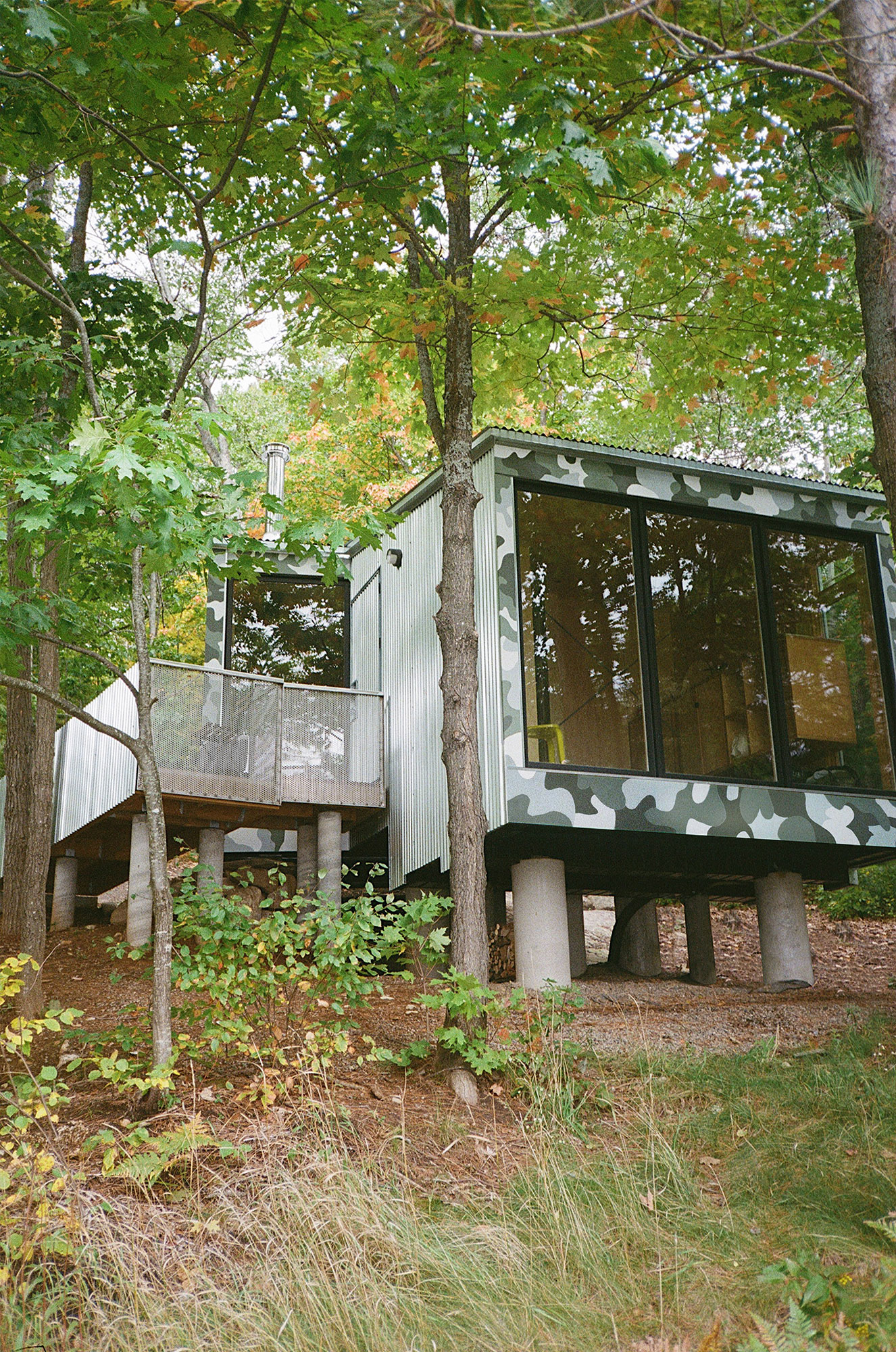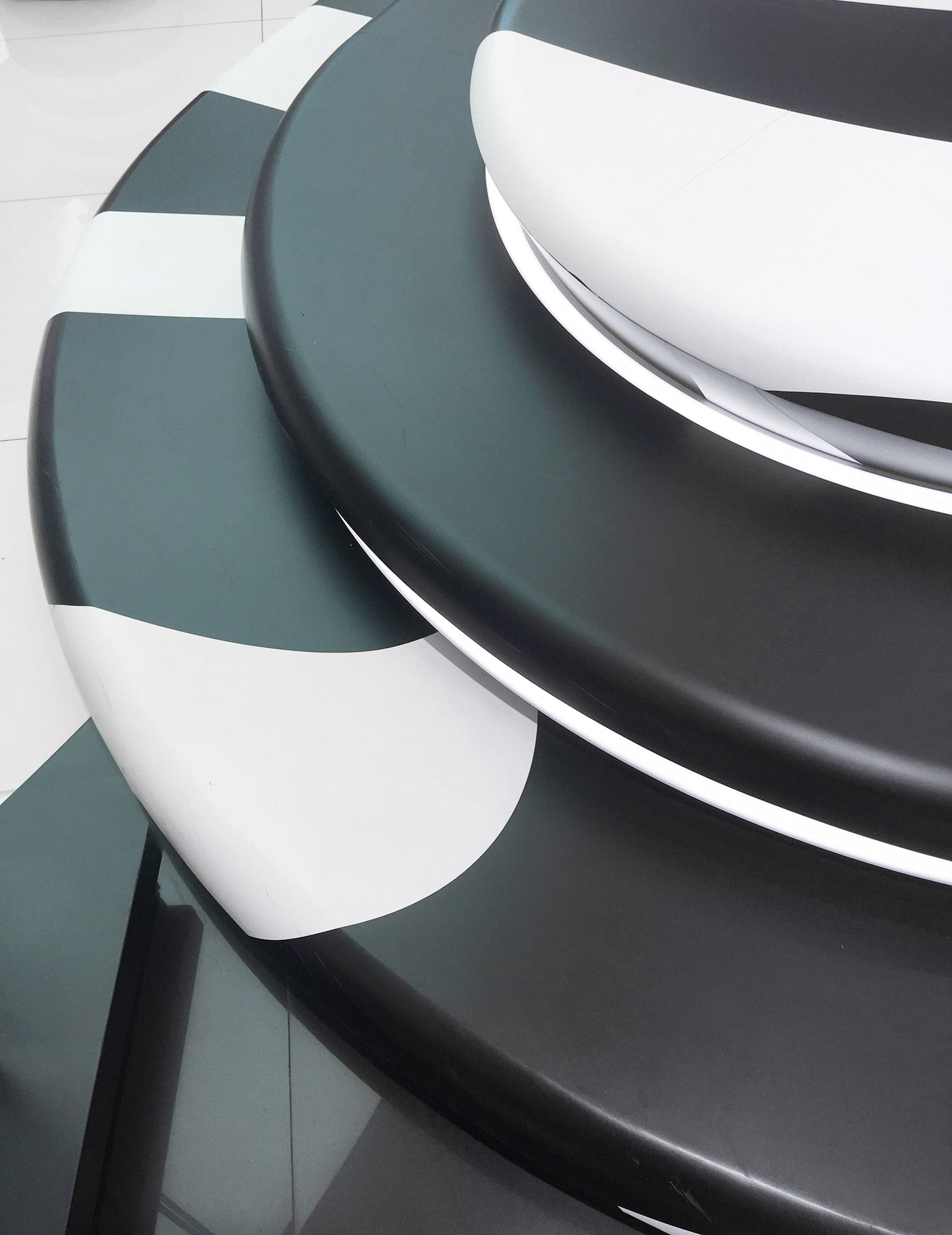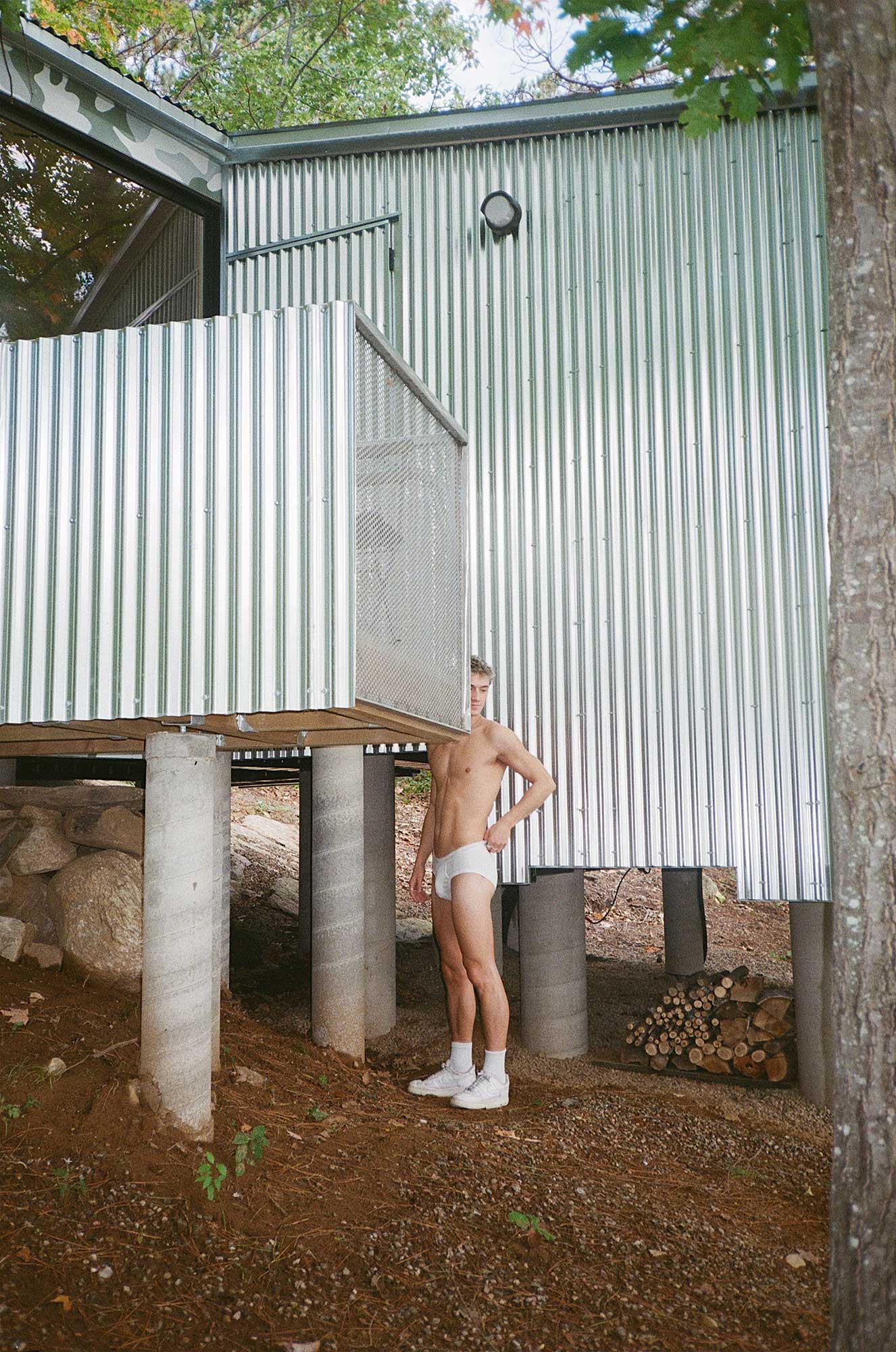
Don’t Let Me Be Lonely is a lakeside cabin designed to shelter the queering of leisure. Among those it hosts is a throuple whose needs formed the brief that define the project’s conceptual core. It is a satellite building in orbit of a larger cottage nearby. Tucked away in the woods, the cabin’s form is directly informed by the sloping bedrock on which it rests. All program is hosted on a stepped interior floor that approximates the ground below: a platform for the body and the activity it sponsors. Fourteen round columns awkwardly populate the gap between IRL landscape and the virtual construction plane of the building’s underside. The building’s entry ramp spans the two realms, elaborating our interest in bridging material and digital domains. The section of the cabin learns from Beatriz Colomina’s interpretation of the domestic voyeurism in Adolf Loos’ villas. Similarly, DLMBL is a machine for the staging, contemplation, and cultivation of the bodies it hosts. Platforming the self and queer desire is one dimension of the building’s effect. DLMBL elaborates the sociality inherent to a relationship of three people and in its sequential platforms, finds an architectural idiom to support and nurture it.
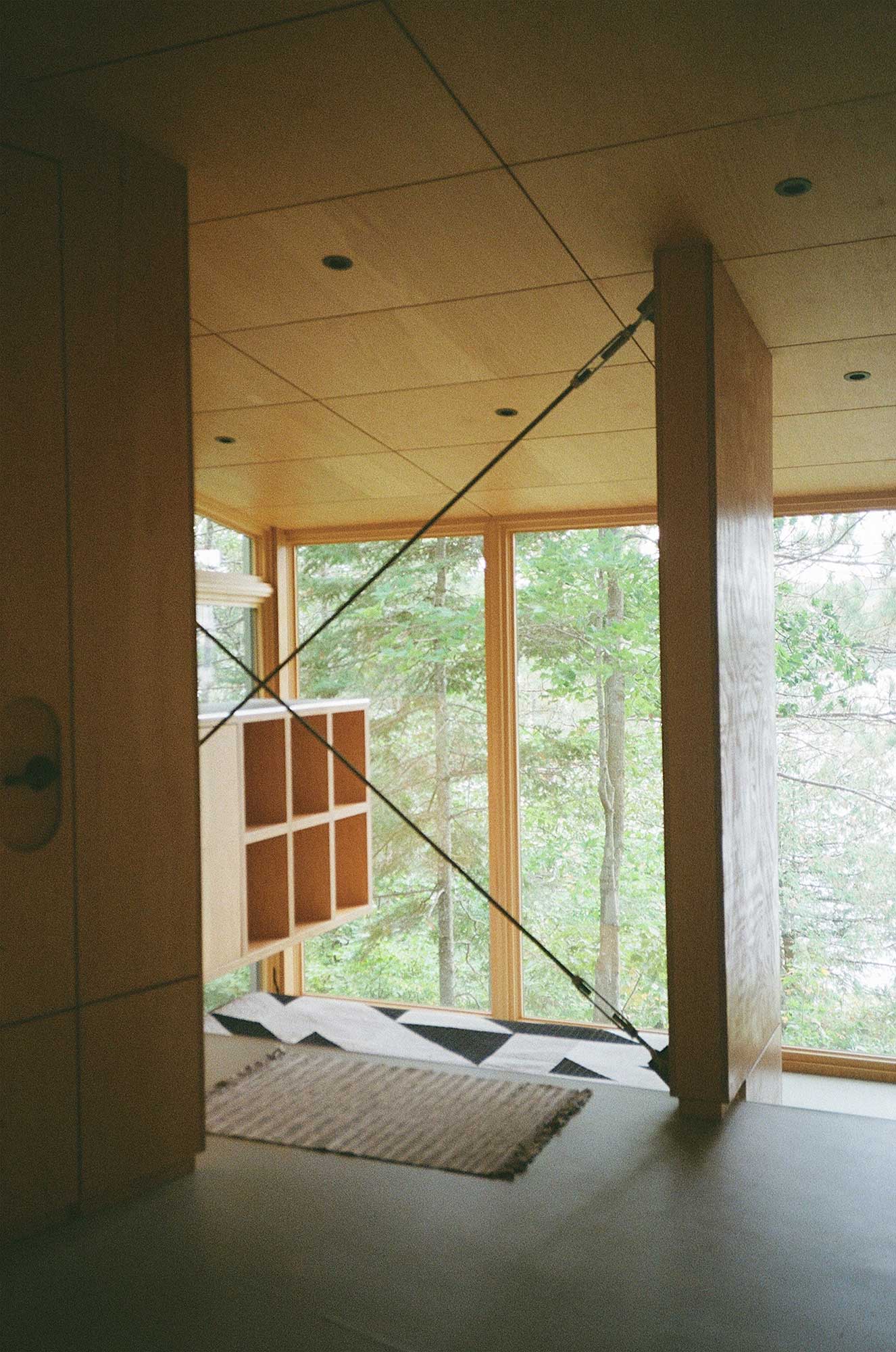
The house approximates the topography of the bedrock slope below, staging a sequence of platforms for interior actitvity to play out, developing Beatriz Colomina’s concept of domestic voyeurism observed in the residential raumplan of Adolf Loos. Fourteen round columns awkwardly populate the gap between IRL landscape and the virtual construction plane of the building’s underside. The building’s entry ramp spans the two, elaborating our interest in bridging material and digital domains. Don’t Let Me Be Lonely hovers over the ground and adapts its topography as an interior terrain of steps and platforms. A camouflage pattern—a nod to the immediate flora, local hunting culture, and military transport jets that fly training runs over the nearby lake, is applied to exterior panels.
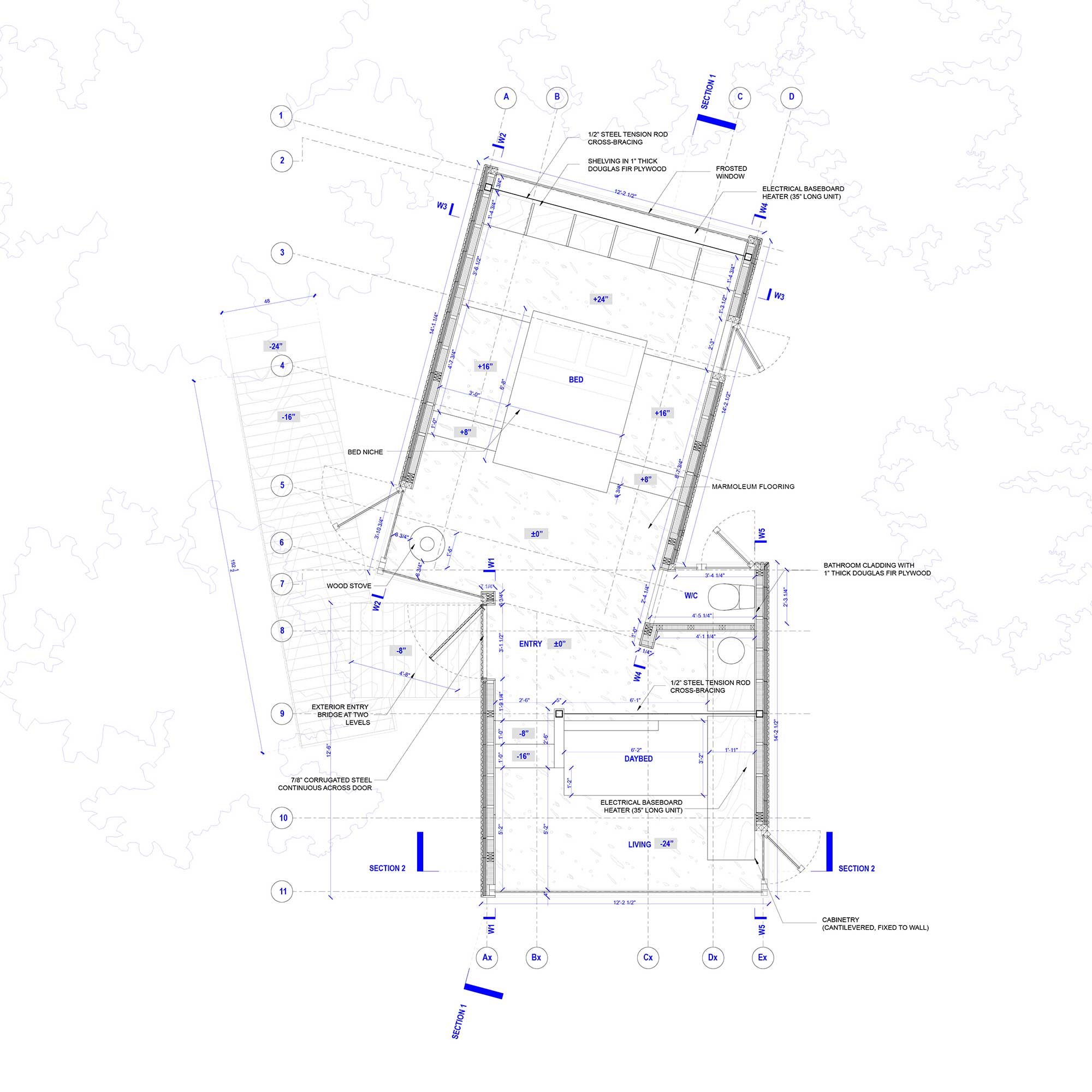
The enclosure is rather hermetic: thick, sprayfoam-filled walls clad in stainless steel limit cellular service. Meanwhile Douglas Fir Plywood is used to wrap the interior walls and ceiling. “Once inside, we wanted to produce a mediated connection to the outdoors through the staging of materials, views, and sound. One can identify this strategy in many of John Lautner’s LA houses,” says Bragado. “From the outside his houses feel often alien to the site, while the interior framed precisely calibrated relationships to context at near and distant scales,” adds Gertler. “Lautner’s body of work resonates also with a tension between the urban and the ‘great outdoors,’ between being plugged in and off grid, which we wanted to advance in this project,” says Bragado. In Don’t Let Me Be Lonely, this translated to a conflict between a sense of belonging—to the main house, to the larger family, to the larger site—and a sense of being off at the margins, at arm’s length, with a smaller group. The new cabin is only a few meters from the existing cottage where the rest of the family stays, but is not visible from any of its windows. Further, Don’t Let Me Be Lonely provides a zone free from the cat hair and allergens entrenched in the existing cabin, which has been a concern for its many allergic occupants.
